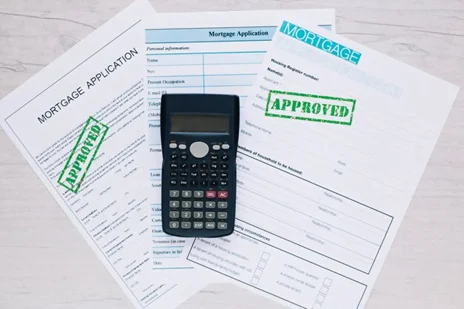
With numerous forms and regulations to understand, it’s easy to get lost in the intricate web of taxation. In this article, we delve into the often-overlooked Tax Form 843, focusing on its purpose, eligibility criteria, and the steps required to claim refunds or request abatements. Whether you’re an individual taxpayer seeking a refund or a business owner aiming to rectify an error, understanding Tax Form 843 can be the key to unlocking potential financial benefits.
What is Tax Form 843?
Tax Form 843, officially known as the “Claim for Refund and Request for Abatement,” is a document used to seek refunds of overpaid taxes or request abatements of certain penalties, interest, or additions to tax. It applies to various tax types, including income tax, employment tax, estate and gift tax, and excise tax. This form serves as a channel for taxpayers to correct errors, claim credits, and rectify overpayments, ensuring fairness in the tax system.
Eligibility for Filing Tax Form 843
Before diving into the process of completing Tax Form 843, it’s crucial to determine if you meet the eligibility criteria. Here are some common scenarios where filing this form may be appropriate:
1. Overpaid Taxes: If you believe you have paid more than the required amount of tax, either through an error or misunderstanding, you may be eligible for a refund. This could occur due to double payments, misapplied payments, or changes in tax laws retroactively affecting your tax liability.
2. Penalty Abatement: Taxpayers who have been assessed penalties, interest, or additional taxes may qualify for abatement under certain circumstances. This can include situations where the taxpayer can prove reasonable cause, such as illness, natural disaster, or reliance on incorrect advice from the tax authorities.
3. Correcting Errors: If you discover an error on a previously filed tax return, such as a miscalculation or incorrect reporting, Tax Form 843 can be used to rectify the mistake and seek the appropriate adjustment.
Filling Out Tax Form 843
Completing Tax Form 843 requires attention to detail and accuracy. While the form itself may appear complex at first glance, breaking it down into sections can simplify the process.
1. Personal Information: Provide your name, address, Social Security Number (SSN), and the tax period for which you are seeking a refund or abatement.
2. Tax Type: Indicate the specific tax type for which you are filing the form. Be sure to select the appropriate tax code from the instructions provided with the form.
3. Reason for Claim: Clearly state the reason for filing the claim, whether it is a refund or abatement request. Provide a detailed explanation and include any supporting documentation that strengthens your case. Remember to refer to the relevant tax laws, regulations, or instructions that support your claim.
4. Calculation of Claim: In this section, you will need to calculate the exact amount you are requesting as a refund or abatement. Ensure that you provide accurate figures and include any relevant calculations or worksheets. If multiple tax periods are involved, provide a breakdown for each period.
5. Sign and Date: Sign and date the form, certifying that the information provided is true and accurate to the best of your knowledge.
Supporting Documentation
Accompanying your Tax Form 843, it is essential to include supporting documentation that substantiates your claim. The exact documents required will vary depending on the nature of your claim. Here are some examples of commonly required supporting documents:
1. Proof of Overpayment: If you are claiming a refund due to overpaid taxes, include evidence of the payment made, such as canceled checks, bank statements, or payment receipts. Additionally, provide copies of the original tax returns for the periods in question.
2. Penalty Abatement Documentation: If you are seeking abatement of penalties, interest, or additional taxes, include any supporting documents that establish reasonable cause. This may include medical records, affidavits, correspondence with the tax authorities, or other relevant evidence.
3. Legal References: If your claim is based on specific tax laws, regulations, or instructions, include copies of those references to support your position. This helps the tax authorities understand the basis for your claim and strengthens your argument.
4. Amended Returns: If your claim involves correcting errors on previously filed tax returns, include the amended returns with the necessary changes marked. This provides a clear picture of the adjustments being made.
5. Correspondence: If you have had any communication with the tax authorities regarding your claim or if you have received any notices or assessments related to the claim, include copies of those documents. This helps provide a complete history of your interactions and supports your case.

Submitting Tax Form 843
Once you have completed Form 843 and gathered all the necessary supporting documentation, it’s time to submit your claim. Here are a few important points to keep in mind:
1. Mailing Address: Check the instructions provided with the form to find the appropriate mailing address for your claim. Different tax types and regions may have specific addresses for filing Tax Form 843.
2. Certified Mail: To ensure proof of delivery and track your claim, consider sending your form and supporting documents via certified mail with a return receipt requested. This provides an additional layer of security and allows you to confirm that your claim was received.
3. Keep Copies: Make copies of the completed form, supporting documentation, and any correspondence for your records. This will be useful for future reference and to track the progress of your claim.
4. Follow-Up: After submitting your claim, it’s important to monitor its progress. Keep track of any correspondence or notices you receive from the tax authorities and respond promptly if requested. This will help expedite the review process and address any additional information required.
Bottom Line
Tax Form 843 can be a valuable tool for taxpayers seeking refunds or abatements. By understanding the purpose of the form, ensuring eligibility, and providing accurate information along with supporting documentation, individuals, and businesses can navigate the complexities of the tax system and claim the financial benefits they are entitled to. Remember, seeking professional advice from a tax professional or consulting the appropriate tax authorities can provide further guidance tailored to your specific circumstances. Take control of your tax affairs, explore the possibilities offered by Form 843, and unlock the potential for refunds and abatements that may be rightfully yours.
Read more about Tax Form 1065
FAQ
Tax Form 843 is a document used by taxpayers to claim a refund or request an abatement or reduction of certain types of taxes, penalties, or interest paid to the Internal Revenue Service (IRS) or another government agency.
Tax Form 843 can be used to claim refunds or request abatements or reductions for a variety of taxes, penalties, and interest, including income tax, employment tax, estate and gift tax, excise tax, and more. Additionally, it can be used for penalties related to the Affordable Care Act (ACA), such as the individual shared responsibility payment.
Tax Form 843 should be filed separately from your regular tax return. You can mail the completed form, along with any supporting documentation, to the appropriate address provided in the form’s instructions. Alternatively, you may be able to submit the form electronically through the IRS’s online services, depending on the type of claim you are making.
The deadline for filing Form 843 depends on the type of claim you are making. Generally, you should file the form within the applicable statute of limitations, which is typically three years from the date you filed your original return or two years from the date you paid the tax, penalty, or interest, whichever is later. However, it is important to consult the specific instructions for your claim or seek professional advice to ensure timely filing.
Yes, if you disagree with the decision made on your Tax Form 843 claim, you have the right to appeal. The specific procedures for filing an appeal will be outlined in the correspondence you receive from the IRS or the applicable government agency.



Jesteś dość nudnych ubrań bez charakteru? Chcesz cechować się sposobem i pokazać światu, co Cię inspiruje? Koszulki z napisem to drogi rozwiązanie, by połączyć modę z namiętnością i kreatywnością!
Niezależnie z tego, lub istniejesz fanem muzyki, sztuki, gier, zwierząt czy podróży – możesz znaleźć lub stworzyć wzór, który idealnie odda Twoją osobowość. Wystarczy doskonały plan i odrobina odwagi, by zamienić zwykły T-shirt w obiekt, co mami spojrzenia i rozwija uśmiech.
Dlaczego warto zamontować na koszulki z nadrukiem?
✔ Indywidualność – wybierasz motyw, który naprawdę Cię wyraża.
✔ Kreatywność – możesz zrobić własny projekt lub zmodyfikować gotowy.
✔ Pasja – nosisz na sobie to, co właściwie lubisz.
✔ Uniwersalność – pasują do jeansów, spodni dresowych, i nawet spódnic.
Nakładanie [url=https://umodo.pl/blog/post/ubierz-sie-kreatywnie-oraz-z-pasja.html]koszulki z nadrukiem[/url] się z pasją toż nie trend – to sposób bycia. Zamiast wtapiać się w tłum, zaprezentuj swój wygląd przez ubranie. Zainspiruj innych, nakładając się nie tylko modnie, ale te świadomie także z duszą.
Macie nasze bliskie wzory? Projektujecie własne koszulki czy wybieracie gotowe motywy? Chętnie zobaczę Wasze inspiracje!
Your comment is awaiting moderation.
Cześć wszystkim,
Przykłada się Dzień Mamy a jako co roku, szukam czegoś, co będzie prawdziwe, lecz te praktyczne. W tymże roku wkroczył na projekt, żeby podarować mamie personalizowaną koszulkę – z nadrukiem, jaki będzie do niej doskonale pasował. Może rzecz w zabiegu „Najlepsza Matka na świecie” bądź z grafiką, która odnosi do jej chęci.
Dziwię się, bądź taka koszulka to dotarty prezent – niby przydatna praca, tylko wolno ją świetnie spersonalizować także wspomnieć trochę od siebie. I myślę, że taki upominek może przyciągnąć uśmiech i uczucie, szczególnie jeśli koszulka będzie rzetelnie skończona oraz opakowana z projektem.
Co o tym liczycie?
Lub człowiek z Was podarował kiedyś koszulkę na Dzień Mamy? Jak zareagowała obdarowana? A zapewne narzekacie ustalone pomysły na nadruki lub miejsce, gdzie o zamówić taką koszulkę?
Chętnie poczytam Wasze marki [url=https://umodo.pl/blog/post/koszulka-jako-prezent-na-dzien-matki.html]koszulka z nadrukiem[/url] oraz inspiracje – może jednocześnie napiszemy listę najlepszych wpływów na koszulkę dla mamy!
Pozdrawiam!
Your comment is awaiting moderation.